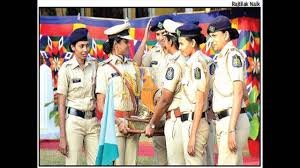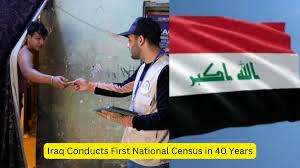Rajasthan Approves 33% Quota for Women in Police Force
In a significant move towards promoting gender equality, the Rajasthan government has approved a 33% quota for women in the police force. This decision is expected to provide a major boost to female representation in law enforcement, aligning with the state’s efforts to empower women in various sectors. By reserving one-third of positions for women, the state aims to enhance the participation of women in critical roles within the police department, addressing both social and administrative challenges.
Empowering Women in Law Enforcement
The introduction of a 33% quota for women in Rajasthan’s police force is a pivotal step towards empowering women and ensuring their greater participation in the workforce. This quota will not only provide women with more employment opportunities but also encourage them to take on leadership roles in maintaining law and order. Furthermore, the presence of more women in the police will aid in addressing gender-specific crimes more sensitively and effectively.
Bridging the Gender Gap in Police Services
Historically, the representation of women in India’s police force has been significantly low. With this initiative, Rajasthan seeks to bridge the gender gap in its police services. The recruitment of more women will ensure a more inclusive work environment and create a robust mechanism to deal with crimes, especially those involving women and children. The government hopes that this move will inspire other states to follow suit in enhancing women’s roles in law enforcement.
Addressing Public Safety Concerns
An increased number of women in the police force can improve public safety, especially for women and vulnerable sections of society. Female officers can offer more empathetic and approachable services when dealing with crimes such as domestic violence, sexual harassment, and trafficking. This decision is expected to strengthen community policing and foster trust between law enforcement agencies and the public.
Potential Challenges in Implementation
While this quota is a step in the right direction, its implementation may pose challenges. Ensuring proper training, infrastructure, and equal opportunities for women in the police force will be crucial. The government will need to take steps to eliminate biases and create a work culture that is conducive to women’s growth in the sector.

Why This News is Important
Promoting Gender Equality
The decision to approve a 33% quota for women in Rajasthan’s police force is a landmark step in promoting gender equality in one of the most critical sectors of public service. This will significantly increase the participation of women in a traditionally male-dominated field and is expected to inspire women to pursue careers in law enforcement.
Boosting Women’s Empowerment
This policy is aligned with India’s broader objectives of empowering women across different fields. By providing more job opportunities and leadership roles to women in the police force, Rajasthan is setting a precedent for other states. This initiative will also help in addressing crimes related to women more sensitively, which has been a growing concern across the country.
Strengthening Law and Order
The presence of more women in the police force is expected to improve the handling of cases, particularly those involving women and children. Female officers are often better equipped to deal with such cases with empathy and care, ensuring justice is served while maintaining sensitivity towards the victims.
Enhancing Public Trust
More women in law enforcement can foster a stronger bond between the police and the public, particularly among women who may feel more comfortable reporting crimes to female officers. This initiative is expected to enhance public trust in the police force, creating a safer and more inclusive environment for all citizens.
Historical Context
The issue of women’s representation in police forces across India has long been a subject of debate. Historically, police forces in India have been male-dominated, with women constituting a very small fraction of the workforce. However, various reforms over the years have attempted to increase female participation. States like Tamil Nadu and Maharashtra were among the first to introduce quotas for women in the police. Rajasthan’s decision to approve a 33% quota follows this trend and represents a growing recognition of the need for gender inclusivity in law enforcement. The move is also part of broader national efforts to promote gender equality in public services.
Key Takeaways from “Rajasthan Approves 33% Quota for Women in Police Force”
| Sr. No. | Key Takeaway |
|---|---|
| 1 | Rajasthan government has approved a 33% quota for women in the police force to promote gender equality. |
| 2 | The quota is expected to increase female representation in law enforcement, particularly in leadership roles. |
| 3 | This decision is part of a broader national effort to empower women in public services, including law enforcement. |
| 4 | The increased number of female officers will help address gender-related crimes more sensitively and effectively. |
| 5 | Challenges in implementing the quota may include providing proper training and creating an inclusive work environment. |
Important FAQs for Students from this News
1. What is the new quota percentage for women in the Rajasthan police force?
The Rajasthan government has approved a 33% quota for women in the police force.
2. Why is the 33% quota for women in the police force significant?
This quota is significant because it promotes gender equality, enhances female representation in law enforcement, and is expected to improve the handling of gender-related crimes.
3. When was the decision to approve the 33% quota for women in the Rajasthan police force made?
The decision was made recently and marks a significant step towards empowering women in the law enforcement sector.
4. How does this quota impact the representation of women in other public services in India?
This quota is part of broader national efforts to increase women’s participation in various public services and is expected to set a precedent for other states to follow.
5. What are some potential challenges in implementing the 33% quota for women in the Rajasthan police force?
Challenges may include ensuring proper training, creating an inclusive work environment, and addressing any biases that may exist within the police force.
Some Important Current Affairs Links

















